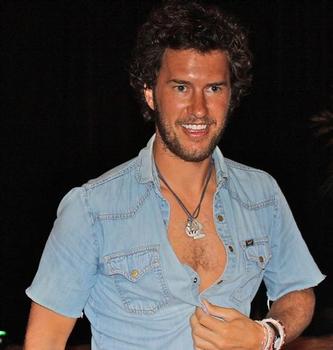One of the most inspiring speakers at the Surf Summit presented by SIMA and BRA this year was Blake Mycoskie, the founder of TOMS shoes.
For every shoe TOMS sells, it gives away a pair to a someone in need.
Blake shared his tale at Surf Summit, and how making giving a key mission of his business turned out to be a successful selling strategy as well.
Entrepreneur through and through
Blake is a born entrepreneur. He was already on his fourth company, an online driving school, when he got the idea for TOMS while traveling in Argentina.
He met some people there who were going to poor areas of the country to give shoes to kids. He decided to volunteer on the shoe drive, and it changed his life.
He saw the need first hand, and felt great after helping. But he had a nagging worry: What will happen when the charity leaves?
That’s when Blake got the idea that changed his life. Why not look to business instead of charity to come up with a sustainable solution, and create a footwear company based on a traditional Argentine shoe?
He found a way to get 250 samples made while in Argentina, which took a month.
The giving hook
Blake flew home to LA, and turned to his female friends for input.
They liked the shoes, but he noticed their faces really lit up when he told them the “one for one” concept.
With no background in fashion, his friends also gave him a list of the top stores to get into in LA.
He couldn’t get through to any buyers via email, the cold calling method buyers prefer these days, and decided to go against the rules and show up in person at stores.
He got lucky in one boutique where the buyer was actually in the store expecting someone else. Blake slipped into the appointment, and his first sale – 80 pairs – was made.
That sale proved very fortuitous, and led to one of the keys of the company’s success: the ability to attract media attention.
The store that bought the shoes created a nice display, and shortly after the shoes debuted, an LA Times reporter noticed it.
On the next page:
What happened when the story ran; why giving works
When the story ran
 She wrote a story, and by 2 p.m. on the day the story ran, 2,200 orders had been placed on the TOMS website. But Blake only had 150 pairs left in his apartment.
She wrote a story, and by 2 p.m. on the day the story ran, 2,200 orders had been placed on the TOMS website. But Blake only had 150 pairs left in his apartment.
He put out a desperate call for interns on Craigslist, and worked through the summer to line up production to fill orders.
(Right: Fernando Aguerre interviews Blake Mycoskie at the SIMA Surf Summit.)
Vogue called. A glossy story ran, and then things really got crazy. Blake was still working in his apartment with three interns, when buyers from Nordstrom, Bloomingdale’s, Macy’s and even stores in Paris called demanding shoes.
All of the accumulated publicity led to selling 10,000 pairs and giving away 10,000 pairs.
On his first shoe drop, Blake took his parents, his siblings, the interns and his friends. One of the key missions on shoe drops is to make sure that each pair is hand-placed on a child’s foot, instead of just given away in bulk.
After that experience, Blake realized, “My life is radically changed forever.”
He realized he couldn’t go back to his old life and had a responsibility to go 100% on TOMS.
Blake returned home, told his traffic school partners he wanted out, and they bought out his portion of the business. That gave Blake the money to hire some good employees from Asics, Nike and Tommy Bahama.
More stories followed in Time and People. Blake was featured in an AT&T commercial, which led to the sale and the giving of 100,000 shoes.
The last three years have been a “nonstop crazy adventure in the U.S. and all over the world,” he said.
Why giving works
Blake encouraged other companies to incorporate giving into their business models. Not only does it feel good, but it is also a more sustainable way to make an impact rather than nonprofits tackling a problem and having to rely on donations, he said.
Also, customers become your marketers and tell all their friends about your product.
In fact, customers are so into the TOMS story, Blake takes customers on shoe drops. Customers pay their own way on the trips, and there’s a long waiting list. Some have even gotten testy that it is taking so long to go on the drops.
The giving model also helps attract great employees, Blake said. At TOMS, the company has employees from Quiksilver, Goldman Sachs and Nike and has a great retention rate – even though the warehouse has no heat or air conditioning.
And lastly, the giving model attracts great retail partners who tell the mission and story of TOMS as passionately as TOMS does, Blake said.
Amazingly, TOMS is only four years old. The company has given 600,000 pairs shoes to people in need, and will have given away one million pairs by the summer, he said.
Blake keeps a crazy schedule and won’t be home again until July. His long-term vision is to open more factories in undeveloped countries, like TOMS did in Ethiopia, to create jobs and make a more sustainable impact.
TOMS is also exploring working with and promoting micro finance organizations.
Blake said there are continuing challenges with production and while he gets tired of the business part of the business, he never tires of the giving part.
“I have met my soul mate of business,” he said.






